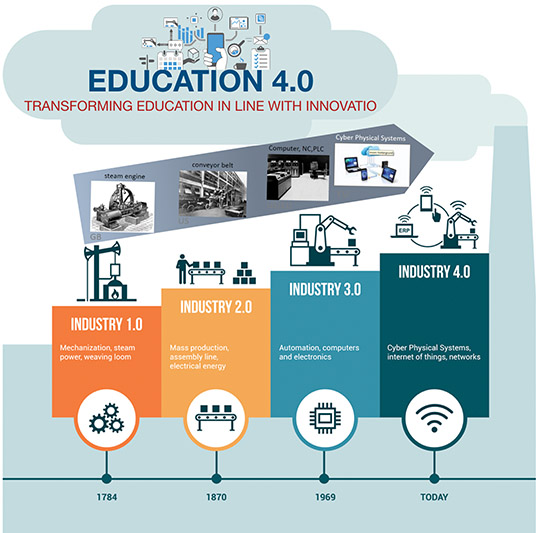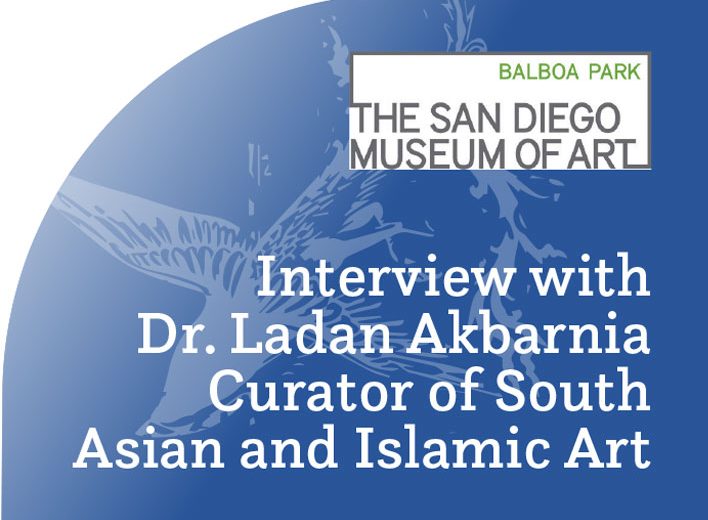By Ali Gooyabadi, Ph.D.
Education 4.0
We are all puzzled with the fast pace of global connectivity, artificial intelligence, smart machines, and autonomous cars—especially in the way these phenomena are reshaping how we think about life, socialization, and work. It seems we are at a juncture in time that we need to once again determine exactly what constitutes work and how we and our children need to learn and develop the required skills to work in the future. It used to be that we went to school and graduated with a degree with which we could build a lifelong profession, but now it seems that as soon as we graduate, we are required to learn a new skillset. This trend seems to be the norm, and the majority of our time is spent studying to be able to work. Lifelong learning is a mandate for the next generations. Market data reveals that most people will have at least 6 different careers, which translates into fundamental reeducating. This is at the level of changes today, but considering the relentless speed of innovation, it is inevitable that the pressure to be constantly re-educated will become more stringent.

This new fact of life requires a new vision for the future of education, a vision that can guide us from schools to lifelong learning! We need to concentrate on how the future of education will evolve, understand the main drivers, key inspirations, and what will matter most. In this article, to be followed with a few more, we will share with you the most recent debates on education and the many ways in which the process of learning and education—at all levels—will change. We are at a juncture in time in which personalized education is a possibility within reach of all.
The effectiveness of distance learning has been widely studied, focusing in part on experiences from such online educational programs as Khan Academy (https://www.khanacademy.org), Udemy (https://www.udemy.com), and MIT’s Blossoms initiative (https://blossoms.mit.edu). The main objective is to be able to unbundle current educational practices so that they can be personalized, repackaged, peer to peer, and continuous. The entire idea in this re-creation is to create a technique and platform that would be possible to teach everything in an effective and customizable fashion by nearly anyone who has a passion to teach. What is taking place in this new trend is the flipping of the classroom-centric model where learners aren’t using textbooks or getting one-size-fits-all lectures, but are managing the learning process through individualized learning engagements with the learning management system. In these systems, educators are there only as guides. It does not matter any longer where learning physically takes place—in the classroom or at the workplace, structured or unstructured, online or onsite, certificated or not—what is apparent is that the future of learning is likely to break free from our current mindsets in the near future. In reality, education and innovation are two sides of the same coin which is called Industry. The Industry has its own lifecycles that are referred to as revolutions; a look at the past 60 years shows that nothing has stayed the same in the way we live, work, study, entertain, or communicate. We are at the beginning of a new worldwide revolution that is referred to as Industry 4.0.
Lifelong learning is a mandate for the next generations.
The First Industrial Revolution took place in the period from about 1760 to sometime around 1840, transforming hand production methods to machines and the increasing use of steam power and water power—simply put, it was the rise of the mechanized factory system. This was considered to be the most overarching revolution in human society which brought with it a total transformation of human society as a whole. The Second Industrial Revolution, or the Technological Revolution, brought us rapid industrialization which is dated between 1870 and 1914 and, interestingly, the beginning of World War I. The main driver of this revolution was electricity, which became prominent in 1882 when Thomas Alva Edison switched on the electrical current at the Pearl Street Station in New York. So many great changes were influenced by electricity that our world without it would be unimaginable.
The Third Industrial Revolution—also known as the Digital Revolution—was a shift from mechanical and analogue electronic technology to digital electronics, which started in the late 1950s and lasted until the late 1970s, bringing about the adoption and proliferation of digital computers and digital record keeping, in turn shaping the beginning of the Information Age. In this revolution, computers were employed to create conglomerates that were impossible to fathom just a few decades before.
Today we are witnessing the dawn of the Fourth Industrial Revolution
And today we are witnessing the dawn of the Fourth Industrial Revolution that combines hardware, software, and biology or “cyber-physical systems” that emphasize advances in communication and connectivity in fields including fifth-generation wireless technologies (5G), nanotechnology, quantum computing, biotechnology, the Internet of Things, the Industrial Internet of Things (IIoT), artificial intelligence, fully autonomous vehicles, decentralized consensus, 3D printing, robotics, and the list goes on and on.
This new revolution has so many implications and potentials that no one can even imagine. Industry 4.0 is the trend towards automation and data exchange in manufacturing technologies and processes. We are witnessing the emergence of the digital corporation in which humans either work alongside digital as coworkers or are working under a digital entity capable of autonomous decision making. Yes, we are being managed by machines just like the science fiction movies depict. “Education 4.0” is the vision for the future of education, in response to the needs of “Industry 4.0.” In these short articles, different aspects of Industry 4.0 will be visited by the author who is an “Edupreneur” interested to be part of a dramatically different paradigm of training students of the future who can become valuable members of the workforce and independent problem solvers alongside this new revolution in our modern society, namely, Education 4.0.
Ali Gooyabadi, PhD is the President and CEO of California Miramar University. He can be reached at agooyabadi@calmu.edu


















